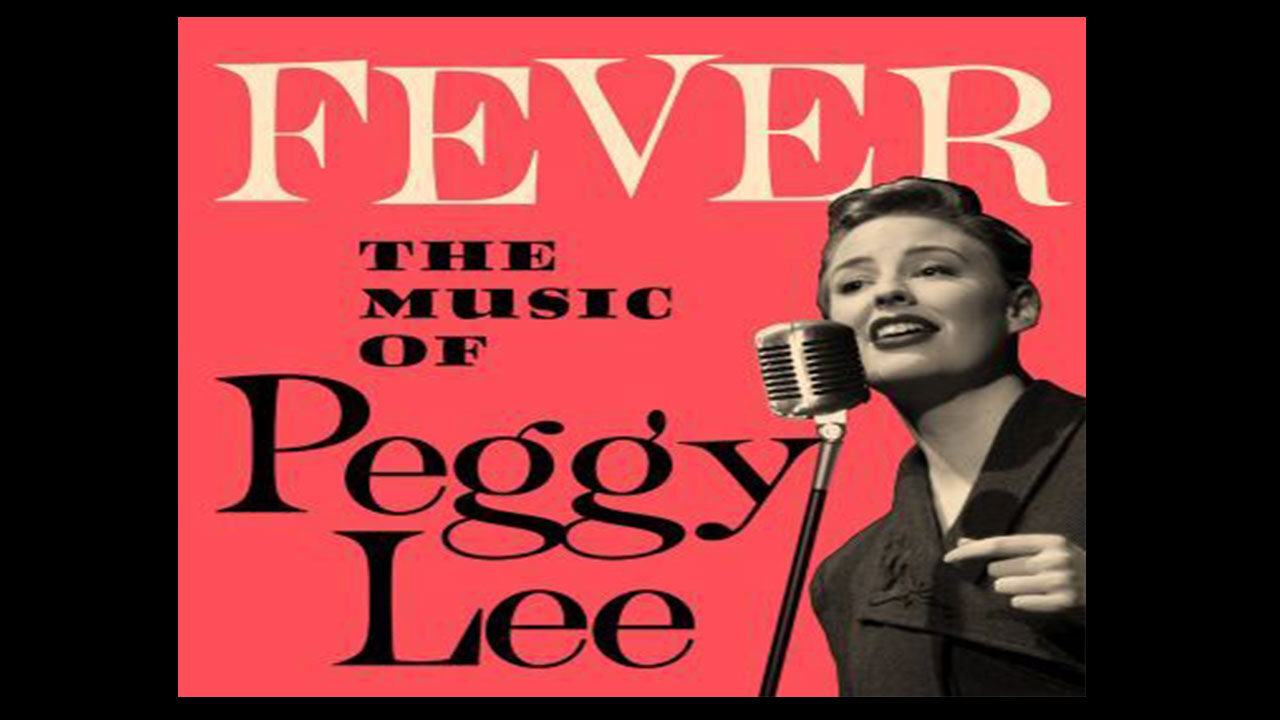
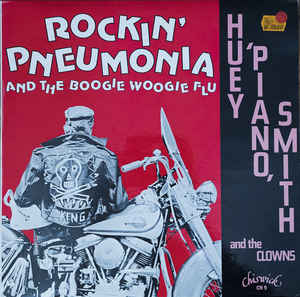 1. “Rocking Pneumonia and the Boogie Woogie Flu”
1. “Rocking Pneumonia and the Boogie Woogie Flu”
A minor R&B hit for Huey “Piano” Smith in 1957, here is a song that brilliantly conflates illness with rock ‘n’ roll, which, of course, many people at the time thought was true, that is, that rock ‘n’ roll was a sign of social and artistic illness.

Thomas Hawk: Flickr-Creative Commons
2. “St. James Infirmary”
No one knows who wrote this song, a re-working of “Gambler’s Blues,” but the great bandleader, arranger, and composer Don Redman took credit for it when he recorded it with Louis Armstrong in 1928. It is probably one of the most famous songs written about a hospital. I have included my three favorite versions here: Armstrong’s, blues singer Bobby Bland’s, and jazz trombonist and singer Jack Teagarden.
 3. “Dust Pneumonia Blues”/“He Fades Away”
3. “Dust Pneumonia Blues”/“He Fades Away”
Folksinger Woody Gurthrie’s “Dust Pneumonia Blues,” circa 1940, was one of his Dust Bowl ballads. It deals with the compromised respiratory systems of people enduring the dust storms of Oklahoma in the 1930s, a song about both environmental and economic disaster.
June Tabor’s “He Fades Away,” released in 1994, is somewhat similar in sentiment, a song sung by a wife about her miner husband who is dying of black lung disease.
 4. “Going Down Slow or Goin’ Down Slow”
4. “Going Down Slow or Goin’ Down Slow”
One of the most famous American songs ever written about illness and death, this version by the composer, St. Louis Jimmy Oden, is among the most notable.

Jimmie Rodgers
5. “T.B. Blues”
Country blues singer and composer Jimmie Rodgers died from tuberculous at the age of 35 in 1933. He recorded this great song about his condition in 1931.
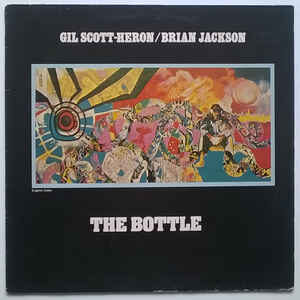 6. “The Bottle”
6. “The Bottle”
Gil Scott-Heron’s great song about a disease, alcoholism, afflicting the black community. One of the finest social awareness songs ever written by an American. Scott-Heron was bedeviled by his own addiction problems for many years.
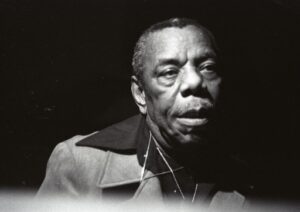
Champion Jack Dupree
7. “T.B. Blues”
Another song on tuberculous by the great blues singer and pianist Champion Jack Dupree.
 8. “Pneumonia Blues”
8. “Pneumonia Blues”
Pneumonia was a very common ailment among African Americans for most of the 20th century (It may still be) and not uncommonly fatal. This, like many other problems and issues in black life, was reflected in blues songs, the everyday music of working-class and lower-class blacks during the first half or so of the 20th century. (Blues Fell This Morning, Paul Oliver’s 1960 study of the sociology behind blues lyrics, is still a rewarding book to read.) Here are three variations of “Pneumonia Blues” by three of the most accomplished blues singers in the genre: Big Bill Broonzy, Blind Lemon Jefferson, and Lightnin’ Hopkins.
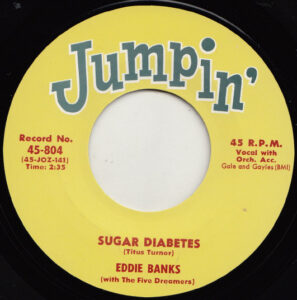 9. “Diabetes Blues”
9. “Diabetes Blues”
Garth “Gaz” Brookfield is a singer-songwriter, a self-described “independent musician, operating without the aid of a manager, record label, or agent.” His “Diabetes Blues” is a humorous autobiographical song about being diagnosed at first with type-2, then type-1 diabetes. The song’s refrain is “I can’t drink cider anymore.”
Big Joe Williams, a legendary Delta bluesman, offers more stark and foreboding version of being diagnosed with diabetes in his “Sugar Diabetes Blues.”
Finally, we have Eddie Banks and the Five Dreamers’ “Sugar Diabetes Blues,” a 1956 R&B tune that is about a man whose girlfriend’s kisses are so sweet that they have given him “sugar diabetes,” as black and rural people are wont to call the disease.
 10. Horace Silver’s “United States of Mind”/“The Cures for What ails Us”
10. Horace Silver’s “United States of Mind”/“The Cures for What ails Us”
In the early 1970s, hardbop jazz pianist Horace Silver released a trio of albums under the collective title, “The United States of Mind.” The songs, words and music by Silver, and performed by Andy Bey and his sister, Salome, were all about health, natural living, in short, healing, very much in tune with the counter culture zeitgeist of the time. Of course, any art devoted to the message of healing implies illness that must be cured, so the miasma of illness is the undercurrent of this endeavor. There are four examples here from the albums: “Old Mother Nature Calls,” “I’m aware of the animals with me,” “I’ve had a little talk,” and “Won’t you open up your senses.” The project was a commercial and critical failure and Silver, deeply disappointed, returned to the jazz playing that his audience expected from him. But this preoccupation with health and illness is an interesting anomaly in the Silver canon.

Johnny Cash
11. “Like the 309”
Johnny Cash’s “Like the 309” comes out of the blues tradition of death and trains: The singer wants his body to be carried on the 309 train when he dies. What is interesting here, and why this song is included, is that the singer is suffering from a respiratory illness (the song mentions asthma) which is very appropriate for the current time.
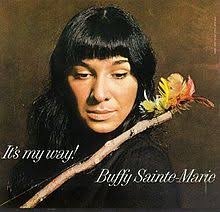 12. “Cod’ine”
12. “Cod’ine”
There are several songs about the illness of drug addiction, but none as powerful as Native-American folksinger Buffy Sainte-Marie’s song about addiction to codeine from her 1964 debut album “It’s My Way.” She herself became addicted to codeine in 1963 and the song is based on her experience.
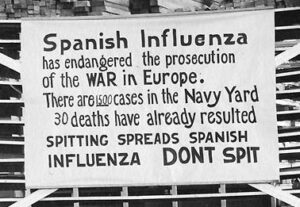 13. “The 1919 Influenza Blues”
13. “The 1919 Influenza Blues”
There are many blues versions of “influenza Blues” floating around, dating back to the early 1920s, after the Spanish Flu epidemic and at the time of the rise of black women blues singers. This is a version by Essie Jenkins.
 14. “Lou’s Got the Flu”
14. “Lou’s Got the Flu”
The great musical humorist Roger Miller (“King of the Road” and “Chug-a-Lug”) writes a song not quite about the flu or, better put, about the flu as a metaphor for the vicissitudes of life.
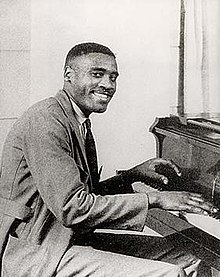
Leroy Carr
15. “Suicide Blues”/“Ode to Billie Joe”
If the desire to commit suicide is a sign of severe depression, then Blues pianist Leroy Carr’s “Suicide Blues” surely qualifies as a song about illness. A far more complex song about suicide (and illness) is Bobbie Gentry’s brilliant southern gothic narrative, “Ode to Billie Joe.”
 16. Broadway
16. Broadway
Next to Normal, the 2008 rock musical by Brian Yorkey and Tom Kitt, is all about a mother’s fight with her bipolar disorder, so the whole musical is about illness. Don’t Bother Me, I Can’t Cope, Mikki Grant’s 1971 black musical about the social difficulties of urban African Americans is included because in some sense being black is a condition that requires cure (political, spiritual, etc.) and this musical makes that clear from its very title. Finally, the 1996 musical RENT by Johnny Larson, about Bohemian artists living under the threat of AIDS offers this famous tune, “Life Support.”
 17. “Fever”/“Good Lovin’”
17. “Fever”/“Good Lovin’”
Jazz singer Peggy Lee is most famous for performing this song but it was originally performed by R&B singer Little Willie John, and written by Otis Blackwell and Eddie Cooley. So, Lee did what so many white performers of the 1950s were wont to do: cover a song by a black performer and make it a “crossover” hit for the white consumer market. Here are both Lee’s and John’s versions. The song is typical in American popular music of making illness a metaphorical expression for sex. More humorously and in a Rock and Roll vein, the Young Rascals did something similar in the 1960s with their song, “Good Lovin’,”about a young man who sees a doctor because he is sick only to discover that he is, well, sex deprived (vulgarly put, horny) and needs, borrow from singer Marvin Gaye, “sexual healing,” (vulgarly put, to get laid).
 18. “What Did I Do to Be So Black and Blue”
18. “What Did I Do to Be So Black and Blue”
If the impact of a derangement commonly known as racism produced color prejudice among blacks, then surely “What Did I Do to Be So Black and Blue” is one of the great songs about depression and unhappiness, a song about severe mental illness as a result of a political and social situation. Written by the great African American songwriting team of Fats Waller and Andy Razaf, the song was sung in a 1930s all-black revue about a black woman who is ostracized and belittled by her light-skinned acquaintances. The version here is by Louis Armstrong, referenced in the opening pages of Ralph Ellison’s seminal 1952 novel, Invisible Man.
19. “Staying Inside”/“Don’t Stand So Close to Me”
As a palette cleanser, a couple of song parodies especially made in response to the coronavirus. The first is a COVID-19 take-off on the Bee Gees’ “Staying Alive” called “Staying Inside.” The second is a Jimmy Fallon, Sting, and The Roots redo of The Police’s “Don’t Stand So Close to Me.”
 20. “TB Sheets”
20. “TB Sheets”
Before the extended musical odyssey of Astral Weeks, a twenty-two year-old Morrison chronicled this extended jam-laden narrative (it is nearly 10-minutes long) about a visit to the room of a young woman, Julie, dying of tuberculosis. While not exactly sad in tone, its repetition grows more harrowing with every bar and beat. This is blues drenched in death, a soundtrack hallmark of Martin Scorsese’s 1999 film, Bringing Out the Dead. Legend has it that Morrison himself broke down in tears after first recording it.

Ian Curtis of Joy Division
21. “She’s Lost Control”
Joy Division sealed its late-’70s reputation as the post-punk band to be reckoned with when it unleashed this song on the world, about a young woman living in the chaos of her epileptic fits. With a bass-line that threatens to swallow you whole, the song became metaphor not only for sickness, but the loss of control it brings, and the fear that ensues. Hence, the title of the 2007 film about the band and its origins, Control. Singer Ian Curtis knew the young woman at the center of the song through his work as an administrative officer at rehabilitation center near Manchester, England. The song also carries no small amount of authenticity given that Curtis himself suffered from epilepsy, which contributed to his suicide at the age of twenty-three.
 22. “Touch Me, I’m Sick”
22. “Touch Me, I’m Sick”
Three years before Nirvana blew the lid off of what we now fondly remember as “grunge” with “Smells Like Teen Spirit” there was this 1988 howler by Mudhoney, arguably the first grunge rock song before anyone had even heard of the genre. Dirty as the inside of a dumpster, and rough as a gravel road, it is essentially an open invitation into anyone’s romance with all things unsavory. New York City post-punkers Sonic Youth loved the song, and Mudhoney, so much they not only attached the Seattle noisemeisters to their 1989 European tour, but also covered the song itself. As if to pile it on, Mudhoney also gave us, “Here Comes Sickness.”

Iggy Pop
23. “Tonight”
While technically a David Bowie song, this belter sung by Iggy Pop (with Bowie heard distinctly in the background) is one of the ultimate power ballads of hope against impending personal calamity. The person Pop sings for is probably dying of a drug overdose, but it is ambiguous and universal enough to apply to death by any cause, including almost certainly sickness. Be prepared to shed a few tears when the chorus of “I am gonna love her ’til the end” rolls around.
 24. “I Am the Virus”
24. “I Am the Virus”
People on the older side of Generation X remember Killing Joke best by the band’s anthem to the decade of their youth, “Eighties.” The emotional and physical rot of capitalism, fortified by the military-industrial complex, was always the band’s favorite theme. So it was only a matter of time, if only five years too early, that they delivered this bone-crunching 2015 tune through, “misery, tears, and death.” Not a comfortable listen, by any means, but appropriately apocalyptic nonetheless.
 25. “Sick Again”
25. “Sick Again”
A riff-chomping, drum-smashing ode to Led Zeppelin guitarist Jimmy Page’s then 14-year-old girlfriend and renowned L.A.-scene groupie Lorri Maddix, and therefore easily the most problematic, if not damnable, song on this list. Underage groupie girlfriends were not quite the big deal in the 1970s era as they were in our time of #MeToo modernity. But as long as pedophilia rears its ugly head in male sexuality—e.g., Jeffrey Epstein, R Kelly—it could be argued that Page and vocalist Plant at least had the decency to label it “Sick” with a capital “S.” At the very least, that makes it a better song (if only marginally so) than Ted Nugent’s more disturbing “Jailbait.”

MIA
26. “Bird Flu”
Calling this song “the best urumee melam/gaana-influenced song about pandemic” is beside the point, because it is almost certainly the only urumee melam/gaana-influenced song about pandemic. Reading the lyrics, even whilst listening to the song, does not offer many clues as to what MIA is singing about. All you need know is that it is as frenetic and confusing as a strong virus. The rhythms do most of the talking. Or, as MIA herself sings, “My beats were too evil.”
